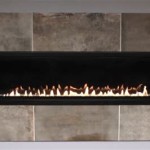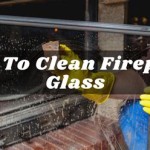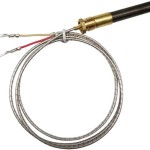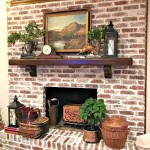Hot Tub Fireplace: Combining Warmth and Relaxation
The integration of a hot tub and a fireplace represents a significant step towards creating the ultimate outdoor relaxation space. This combination leverages the therapeutic benefits of hydrotherapy with the comforting ambiance of a fire, resulting in an environment that promotes physical and mental well-being. The convergence of these two elements necessitates careful planning and execution to ensure both safety and optimal enjoyment.
Hot tubs, renowned for their ability to alleviate muscle tension, reduce stress, and improve circulation, have become increasingly popular additions to residential properties. Fireplaces, on the other hand, offer a visual focal point and a source of radiant heat, extending the usability of outdoor spaces into cooler months. When strategically combined, these elements create a synergistic effect, enhancing the overall experience of relaxation and socialization.
However, designing a hot tub fireplace setup requires careful consideration of several factors, including spatial planning, material selection, and adherence to safety regulations. The placement of the fireplace relative to the hot tub, the prevailing wind direction, and the proximity to combustible materials all play crucial roles in ensuring a safe and enjoyable environment. Furthermore, selecting appropriate materials for both the fireplace and the surrounding landscape is essential for durability and aesthetic appeal.
Key Point 1: Strategic Placement and Spatial Considerations
The placement of the fireplace relative to the hot tub is paramount to both safety and functionality. A primary concern is the prevention of smoke inhalation. The fireplace should be positioned upwind of the hot tub, taking into account the prevailing wind direction in the area. This minimizes the likelihood of smoke drifting towards the occupants of the hot tub, ensuring a clean and comfortable breathing environment.
Furthermore, the distance between the fireplace and the hot tub is a critical factor. While the allure of a close proximity is undeniable, it is essential to maintain a safe distance to prevent accidental burns or the risk of combustible materials igniting. Local building codes typically specify minimum clearance requirements for fireplaces, and these regulations should be strictly adhered to during the planning and construction phases. Generally, a distance of at least eight to ten feet is recommended, although this may vary depending on the specific design and materials used.
Spatial planning should also consider the surrounding landscape. The area around the hot tub and fireplace should be designed to facilitate easy access and movement. Paths should be clearly defined and well-lit to prevent trips and falls, especially during nighttime use. Adequate seating areas should be incorporated to allow for comfortable socializing and relaxation. The overall design should aim to create a cohesive and inviting space that seamlessly integrates the hot tub and fireplace into the surrounding environment.
The proximity of the fireplace to the hot tub cover is also important. A stored hot tub cover should be at least ten feet away from a fireplace according to most fire safety codes. This will help prevent accidental fire danger when the fireplace is in use, protecting both the hot tub investment and safety of users.
Key Point 2: Material Selection and Durability
The materials used in the construction of the hot tub fireplace and its surrounding landscape must be carefully selected to ensure durability, safety, and aesthetic appeal. The fireplace itself should be constructed from non-combustible materials such as brick, stone, or concrete. These materials are able to withstand high temperatures and prevent the spread of fire, making them ideal choices for this application.
The surrounding landscape should also be designed with fire-resistant materials in mind. Mulch, for example, can be a potential fire hazard if it is placed too close to the fireplace. Instead, consider using gravel, stone, or other non-combustible materials to create a safety barrier around the fireplace. Plants should also be selected with care, avoiding those that are highly flammable or produce excessive litter.
When selecting materials for the hot tub surround, it is important to consider both aesthetics and functionality. Wood is a popular choice for its natural beauty and warmth, but it must be properly treated to resist moisture and decay. Composite materials offer a low-maintenance alternative to wood, providing a similar look and feel without the need for regular staining or sealing. Stone and tile are also popular options, offering durability and design flexibility.
The overall aesthetic of the hot tub fireplace area should complement the existing architecture of the property. The materials and colors should be chosen to create a cohesive and harmonious look. Consider the style of the house, the surrounding landscape, and the desired ambiance when making material selections. A well-designed hot tub fireplace area can significantly enhance the value and enjoyment of the property.
Finally, it is important to ensure that all materials used are weather-resistant and able to withstand the elements. Exposure to sun, rain, and snow can take a toll on outdoor structures, so it is essential to select materials that are designed to withstand these conditions. Regular maintenance and upkeep will also help to prolong the life of the hot tub fireplace and its surrounding landscape.
Key Point 3: Safety Considerations and Regulations
Safety is of paramount importance when designing and installing a hot tub fireplace. Adherence to local building codes and regulations is essential to ensure a safe and compliant installation. These codes typically specify minimum clearance requirements for fireplaces, as well as guidelines for the use of combustible materials and the installation of safety features such as spark arrestors.
A spark arrestor is a mesh screen that is designed to prevent embers and sparks from escaping the fireplace chimney. This is particularly important in areas with dry vegetation or a high risk of wildfires. Spark arrestors should be regularly inspected and cleaned to ensure that they are functioning properly.
The use of a fire extinguisher is also recommended for all hot tub fireplace areas. The fire extinguisher should be readily accessible and properly maintained. All occupants of the property should be familiar with the location and operation of the fire extinguisher.
Regular maintenance is essential to ensure the safe operation of the hot tub fireplace. The chimney should be inspected and cleaned regularly to remove any creosote buildup, which can be a fire hazard. The firebox should also be inspected for cracks or damage, and any necessary repairs should be made promptly.
When using the fireplace, it is important to exercise caution and common sense. Never leave a fire unattended, and always ensure that the fire is completely extinguished before leaving the area. Keep children and pets away from the fireplace, and never use flammable liquids to start or accelerate a fire. These precautions will help to ensure a safe and enjoyable experience for all.
Additionally, electrical safety is a critical concern when dealing with both hot tubs and fireplaces. Ensure that all electrical connections are properly grounded and protected from moisture. Consider hiring a qualified electrician to inspect the wiring and ensure that it meets all applicable safety codes. Never use electrical appliances or devices near the hot tub while you are in the water.
The installation of carbon monoxide detectors is also highly recommended, especially if the fireplace is located near enclosed spaces such as a patio room or sunroom. Carbon monoxide is a colorless, odorless gas that can be deadly. Carbon monoxide detectors can provide an early warning of a potential hazard, allowing occupants to evacuate the area and seek medical attention if necessary.
Finally, it is important to educate all occupants of the property about the safe operation of the hot tub and fireplace. This includes providing instructions on how to use the equipment properly, as well as outlining potential hazards and safety precautions. By taking these steps, one can create a safe and enjoyable environment for all to enjoy.

Hot Tub And Fireplace Combo Log Homes Dream House My Home

Imagine Inspiration Gallery Residential Fireplaces Hot Tub Outdoor Fireplace Designs Garden

Hot Tub Outdoor Fireplace And Kitchen Love It Backyard Landscaping

Stunning Backyard Hot Tub With Water Fall Patio Outdoor

Create Special Moments With Romantic Hot Tub Ideas

Banff Aspen Lodge Outdoor Hot Tubs With Fireplace Of Tripadvisor

Premium Photo Relaxation By Fireplace And Indoor Hot Tub In Winter

Backyard Ideas For Hot Tubs And Swim Spas

Backyard Fireplace With Hot Tub Pool Favething Com

20 Outdoor Fireplace Ideas Hot Tub Backyard Landscaping
Related Posts








